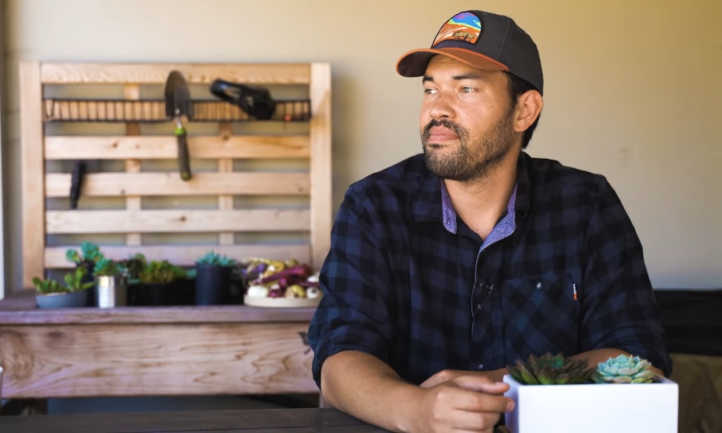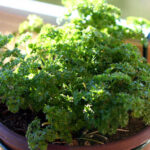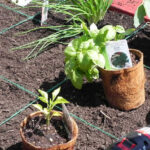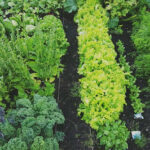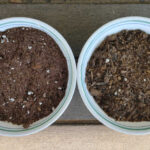Early spring is here! The time has come to plan your vegetable garden layout. If you’re new to vegetable gardening, don’t be intimidated. While there’s a lot that goes into planning and creating a vegetable garden, it’s easy if you stay organized.
Your garden layout, even after it’s fully developed, isn’t permanent. The seasonal cycles allow you to adjust and redefine the kind of gardening you want to do. There are slow methods, fast methods, and plenty of in-between modes too.
One thing you need to ensure the best vegetable garden layout possible is excitement. Get excited! Get inspired, and you’ll have the momentum to get through some of the small hurdles that can arise as you garden.
Keep your initial inspiration and mission in mind to revisit as the seasons go on and you’ll have no trouble at all. Whether this is your first garden or an established garden a good plan is necessary. Now, let’s get into everything you need to create and maintain a lovely vegetable garden.
Vegetable Garden Layout Design
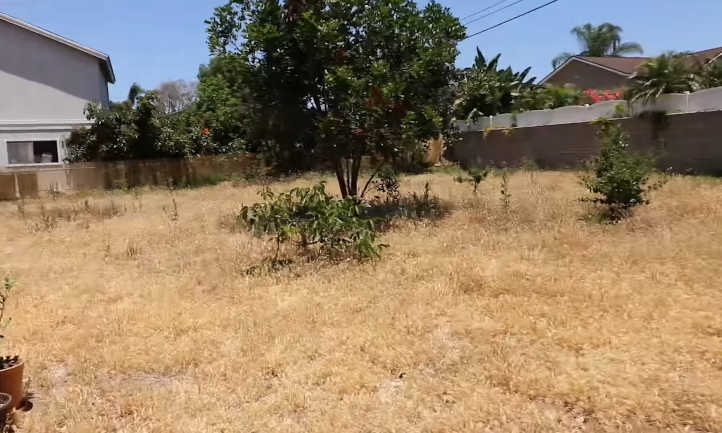
Here are some of the first steps in planning your vegetable garden. Ideally, the planning phase takes longer than implementation because there’s a lot to consider.
Initial Observations
Before you plan a vegetable garden, spend time observing the area you want to cultivate. It’s important to understand how the space is oriented, and what kind of permanent features will influence your gardening practice. A yard that has access to sunlight from the south in the northern hemisphere (and north in the southern hemisphere) is ideal for growing a wide range of plants. Large trees can block out sunlight and need to be acknowledged as you observe. Note the light will change angles as the season changes too.
Think about the temperature range of the area. Are there structures that can help shade plants in intense heat? Are there part shade patches next to fully sunlit areas? Contemplate the general range of temperatures in the season you’re planning for before you decide on any of the particulars. You’ll thank yourself for the prep later as the seasonal extremes set in.
Consider the topography of the area and the size of the area. Inclines and ditches change the way water moves through your garden. They also influence the plants you choose to grow and the kinds of beds you prefer to use. Tiered beds may be an excellent option for someone with a step-like elevation in their yard. A flat yard offers many design options. You may want to do some excavation to create inclines and level areas.
The soil that exists in the yard may need to be amended. While each plant has differing soil requirements, you may need to build a base soil that can be amended per plant. Here in Texas, we are “blessed” with heavy clay that doesn’t drain well. Therefore, most gardeners choose to build beds on top of the soil, rather than till in and amend the soil. Check out a soil map to see what kind of soil is in the earth under your feet. Then decide which bed type works best for you.
If there are seasons chock full of precipitation, you may consider planning for water catchment. You may have an idea to build beds that have accompanying attachments that shield plants from the intense cold, or maybe you’re interested in allowing the season to dictate how you garden, planting rain-loving vegetables in wet seasons, and avoiding cultivation in extremes.
Another consideration is wildlife. If you live somewhere that hosts deer, rodents, birds, insects, and feral cats consider them in your plan too. Higher beds keep out rabbits. Netting and fencing can keep out all kinds of wildlife. The plants you choose can deter or attract wildlife too.
What’s Your Inspiration?
One important question to ask yourself is, “Why do I want to garden?” By understanding your inspiration, and your reasons for growing, you’ll be better informed about how to garden. If a market garden is your goal, you’ll want to use the most efficient resources at your disposal. For a permaculture garden, you’ll move much slower and keep a closed system going to grow vegetables. If you simply want to grow food for yourself, you may have more room to experiment. Maybe you were inspired by someone else’s design and you’d like to incorporate that in your own garden. As you garden, keep your reason handy as adjustments are made. If gardens are new to you, know it’s totally ok to start small and work your way up from there. Maybe the goal is simply to produce a harvest. Maybe it’s to produce crops that have enough excess produce to sell.
Planning Your Garden Layout

Once you’ve observed the garden area, plan before planting. Here are the key ways to plan for gardening veggies in the long term.
Sketch Out the Space
With all of your observations in mind, grab a pencil and paper and sketch out a raw draft of the yard sans gardening equipment and plants. This gives you a bird’s eye view of the space as a whole. Your drawing could be as technical or simple as you want. Feel free to include elevation, sunlight, water movement, and permanent features like trees and rocks.
Add Your Design
Now that you have a good sense of the lay of the land, add your desired design. This helps you determine the most efficient use of areas in the garden. Think first about the overarching patterns of the design, and then include details. The larger elements include garden bed types and their placement, as well as where your irrigation source and pathways are. Include the larger parts of your garden plans, like work stations, irrigation, and entryways. If you’re gardening around a pond, draw that pond in your garden design. Then include leisure spaces where you might have lawn furniture or benches. Think about where your compost bin or pile is going to be placed, and where you’ll store your garden tools and bulk soil.
Pick Your Plants
Once you have the design developed, take into account which plants you want to grow. For maximum success choose plants you know you love to eat. Also, think about different planting styles. Companion planting ensures there’s a supportive system of growth, especially in a small space. Small spaces benefit from styles like square foot gardening, where every part of the garden beds is filled with something. Maybe you’re most interested in preparing the soil for upcoming crops and would like to start with cover cropping. Intensive planting is another way to save space and increase your yields, by growing vegetables closely together.
Consider what each plant will need, and why you want to grow each plant. A kitchen garden will ideally have a wide variety of fresh produce. The fresh food includes vegetables and herbs from varying food groups, that way your fresh meals are varied and desirable. Another consideration, especially if you want to grow perennial plants is when the timing for crop rotation and division of plants will take place.
Know what each plant needs in a garden bed. Vining plants either need a lot of horizontal space or a vertical space like a trellis. A sunny deck may not have room for a full bed, but you can still get a bountiful harvest from a small container garden. Some plants need mounds to grow adequately, and some need a microclimate. In your plan, include those features alongside your plants. One important part of vegetable garden plans is timing. When can you start the seed for plants in your edible garden? Alternately, maybe you’d like to grow an edible garden from starts you purchased. Smaller plants will receive shade from sun exposure on the other side of a larger plant.
Finally, draw in your irrigation plans. If you want to water raised beds with a hose, draw in the water source in your vegetable garden plans. If you’re square foot gardening, consider a grid watering system. If you’re working with perennials in a small garden layout, a simple soaker hose might be most appropriate for you.
Now that you have the beginnings of your vegetable garden plans in place, you can think about how to grow vegetable plants in the upcoming seasons. This feeds directly into future garden layouts. Knowing what to plant after you plant this season will help you make the most efficacious layout.
Implementing Your Vegetable Garden
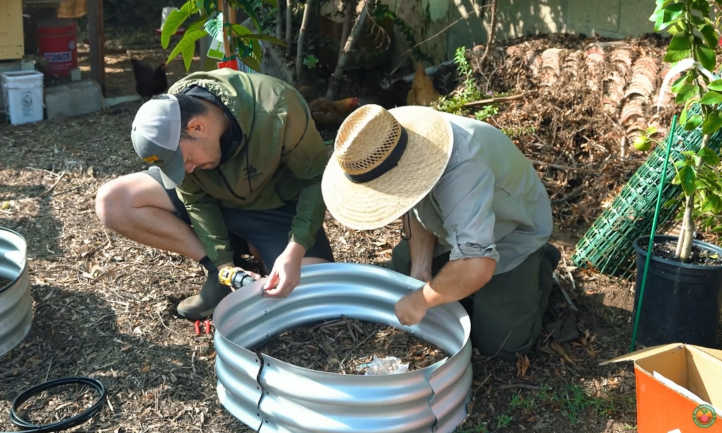
Once you have a plan for developing a lovely garden full of fresh vegetables, it’s time to set it up! Here, we’ll cover each step of covering every square foot of your garden with fresh greens, flowers, and herbs.
Purchase Materials
If you’re working with raised beds, make sure those will arrive at the appropriate time for implementing your garden design. Order seeds that you need for the growing season. Some seed suppliers run out of most vegetables quickly – especially popular garden vegetables. It may be best to tackle ordering those when you decide you want to grow them. Or you can purchase starts from a nearby nursery. Think about the tools you’ll need to set up each raised bed. If you have to fill raised beds, calculate the amount of organic matter you need. And think about what kinds of fertilizers you’ll need as well.
Preparing the Space
Whether you’re working with raised beds, containers, or in-ground beds, mark out the garden area before you set everything up. This could be as simple as clearing the garden ground, removing weeds, then marking out where your raised beds will go with stakes or with a shovel. If you grow vegetables and flowers that need full sun, consider pruning trees and shrubs that could block out the sun. This is especially important if you’re working with gardens oriented to the north side of a home because the angle of the sun provides less sun than the south side. If you’re working in the ground, apply whatever treatments you need to ensure your garden isn’t attacked by pests. Then arrange all your materials, and break up each task you need to accomplish before planting, planning it out day by day.
Setting Up Beds
Prepare the raised bed or in-ground beds, or containers for small gardens. Build the beds and place them, then fill them. If you’re working in the ground, till in up to a depth of 12 inches. Then amend the soil with the appropriate amounts of organic materials and soil components. If you want to produce vegetables, herbs, and flowers that need certain types of fertilizers, either hold off on those until planting or amend the soil as you develop the beds. Then add extensions like fencing, a trellis, and square markers.
Irrigation and Garden Stations
Before you get your vegetables planted, install your irrigation. If you’re growing veggies in rows, water your crops with drip irrigation. Soaker hoses are also adequate. One of the tips we discussed before this section is designing the irrigation to ensure you have a healthy spring or fall harvest. If the garden vegetables need sprinkler heads, get those together. Some irrigation designs require installation in gardens before the beds are built or filled. Keep that in mind in your planning process. This is also a great time to set up your compost bin, workstations, and tool shed if you haven’t already done so. Find a place to store each seed packet, tool, and starter pot. Also, think about storage for insecticides for pests, and various disease remedies and preventions.
Planting and Maintenance
Perhaps the best part of planning gardens is planting veggies. Plant vegetables with other vegetables, or plant them next to flowers and herbs that help you trap and control pests in the garden. Companion planting fits right into an integrated pest management strategy. If you’re going for a kitchen garden, consider companion planting in a square foot garden. If your garden is close to the house, think about companion planting in small containers near doors and windows. Then think about how you will care for the garden. Schedule a daily garden walk. Get to know the plants and the creatures in your garden. Most of all, enjoy what you have made.
Vegetable Garden Layout Ideas
Here are a few basic garden layouts and a bit of explanation for each. The first of these designs for gardens is very simple. Then the complexity of the gardens grades up as they go.
Simple Raised Bed Plan
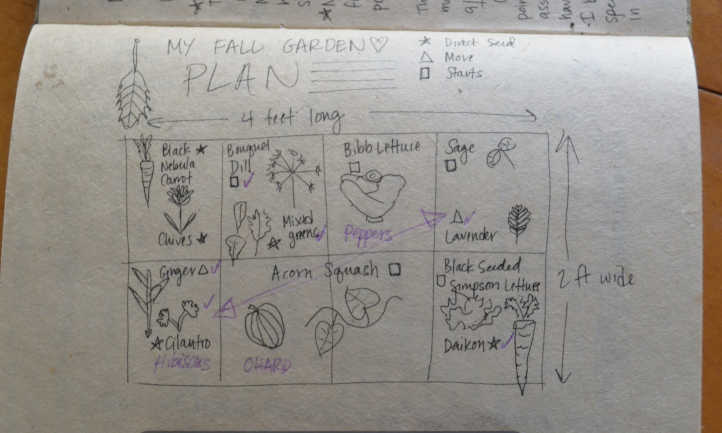
Here is a simple plan oriented to just one raised bed. This is a great way for a new gardener to start with one bed and expand. It’s also great for gardeners who want to hone in on one aspect of the garden area.
Additional Structure Plan
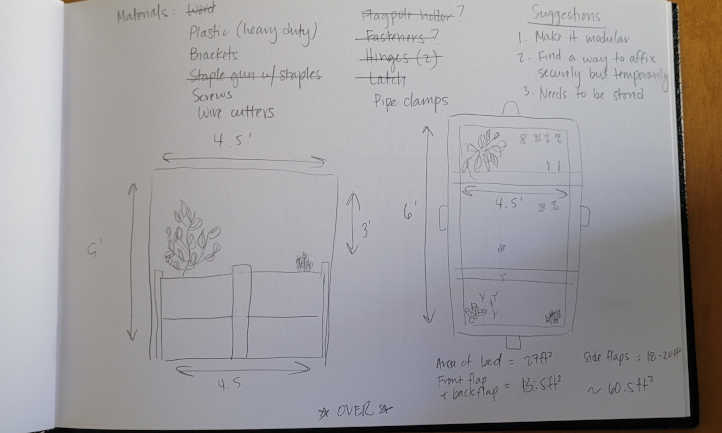
This plan is focused on a frame added to a raised bed to allow gardening in winter. It includes a list of materials needed, which you can cross off as you go. Measurements and a rough drawing are all you need to add to your beds.
Full Spring Garden Plan
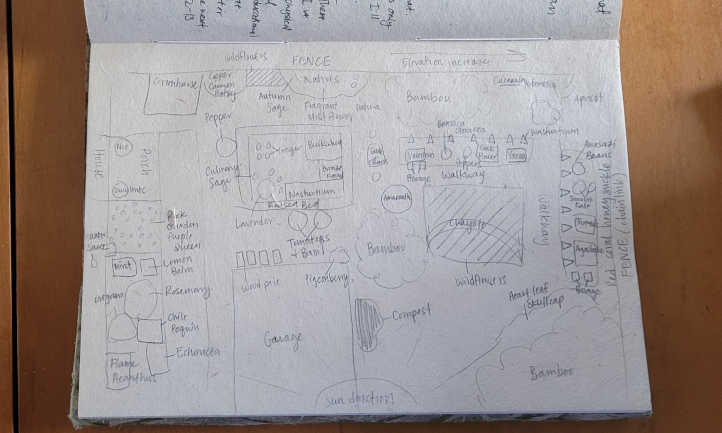
Here is an example of a rough sketch of a full outplanting for spring. It includes all aspects of the yard and where each plant will go. The sketch considers the sun’s orientation, and how the garden is elevated. Designs could even be more technical and created in your favorite design program on a computer if pen and paper aren’t your styles.

